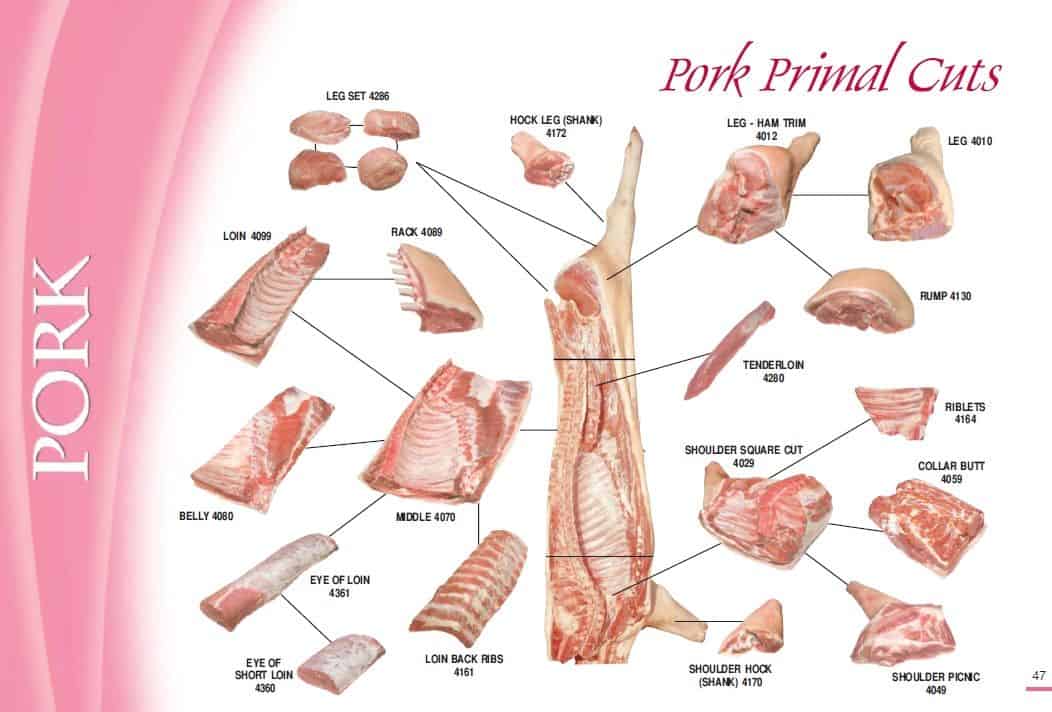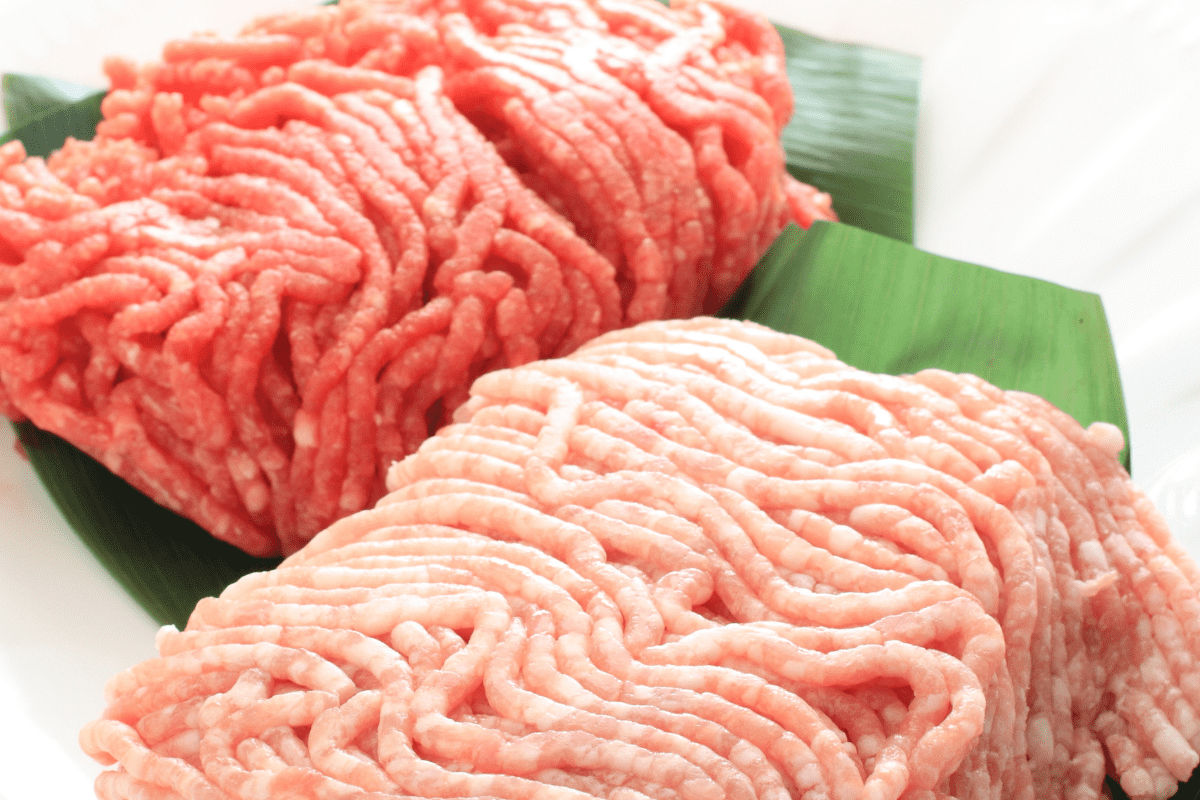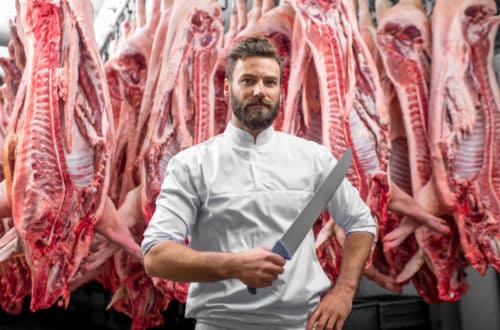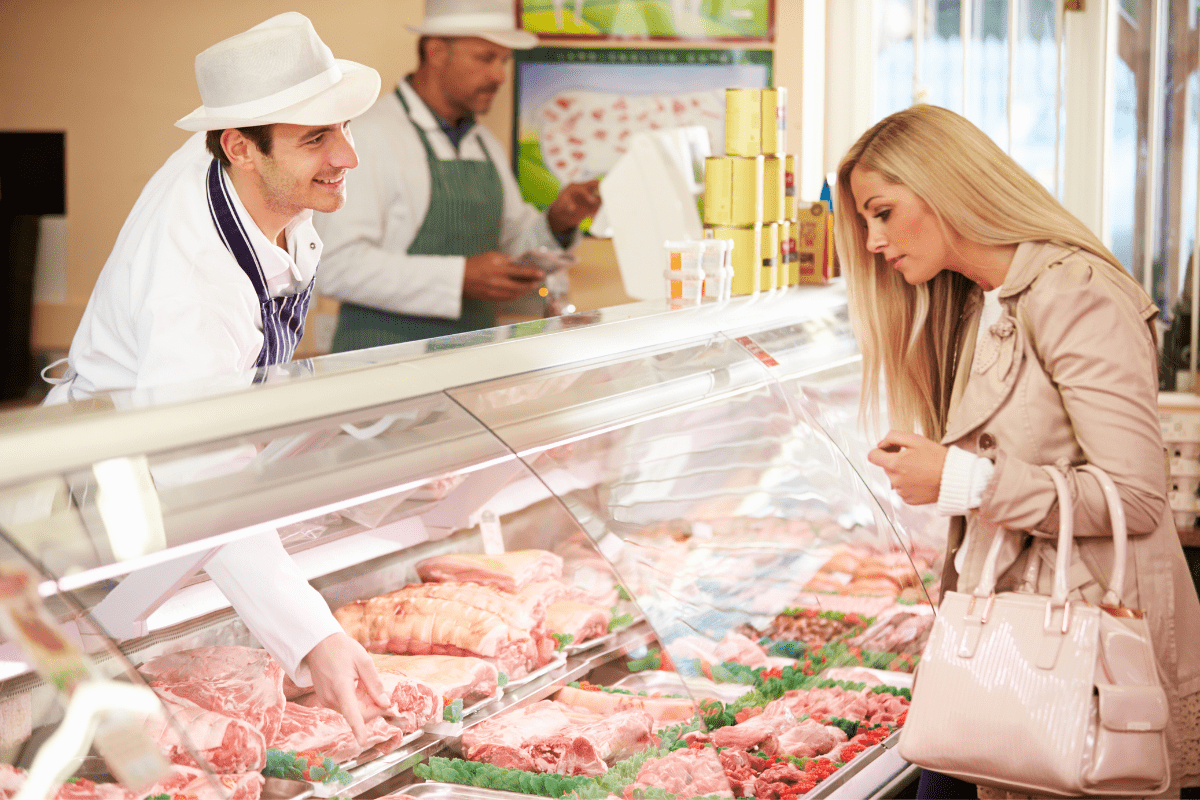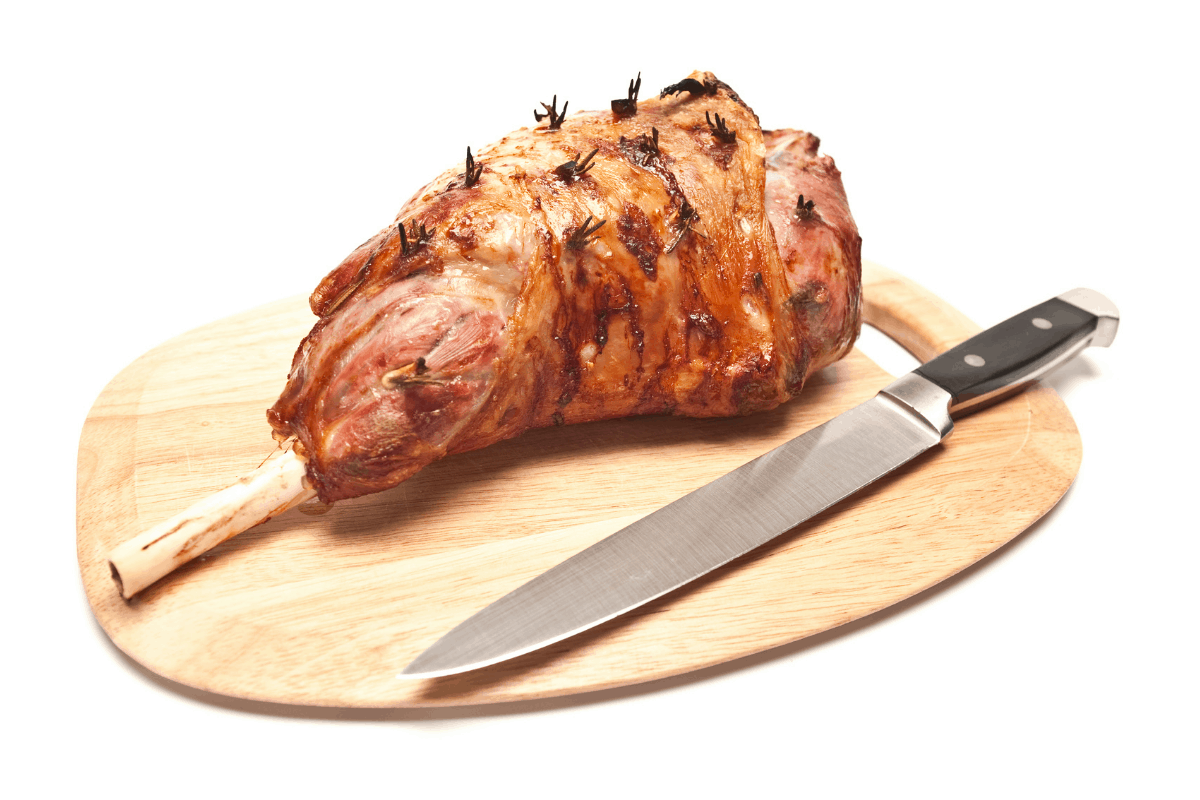Over the years there has been a dramatic decline in the amount of independent butchers stores, meat markets and meat counters available to shoppers. These have been replaced with convenience packaged meat being sold in grocery store aisles, with no expert on hand to guide the shopper to buying the right cut of meat to suit their needs.
This article will focus on explaining the different types of pork cuts most commonly sold, where they come from on the animal, and how best to cook them to ensure tender and tasty pork every time.
So lets begin by looking at the whole side of a pig.
The diagram below shows a half pig that has been cut down the middle and had the head and internal organs removed. This is a common way for the meat to be delivered to your independent meat markets after slaughter. A skilled butcher will then break down the carcass into smaller retail cuts.
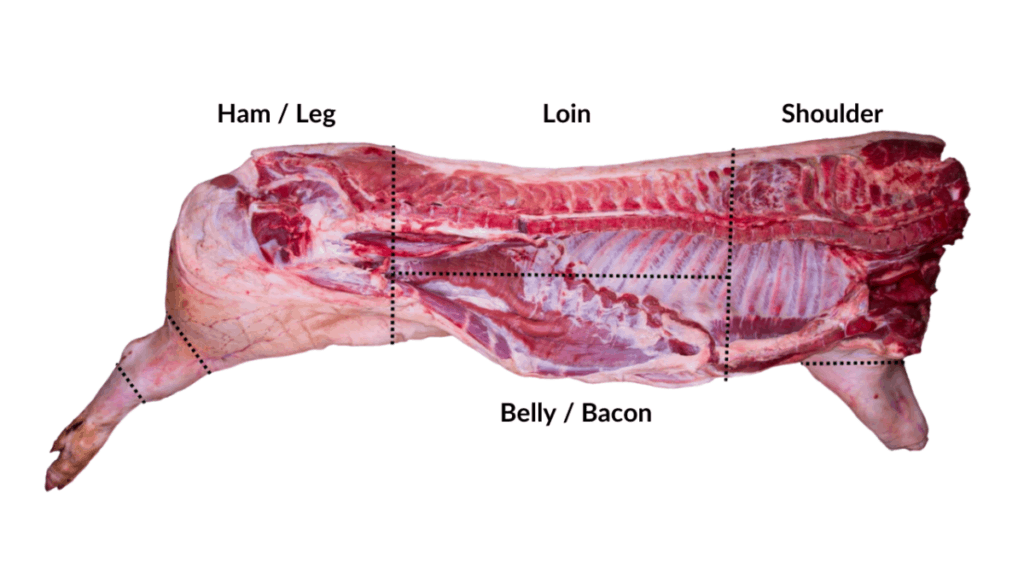
As you can see from the diagram above, a pig is usually cut into four main sections that your butcher will then take and cut into retail portions that you may be more familiar with.
We will now look at how each of those four sections may be cut down further, and the different retail pork cuts that come from each. Please bear in mind that each section can be cut into a variety of different retail cuts, and every butcher will have their own style of cutting, and sometimes even their on name for certain cuts.
To try and keep things clear, we will list the most common cuts that you can expect to see in stores, and the most commonly used name for those cuts.
Pork Cuts From The Shoulder of A Pig
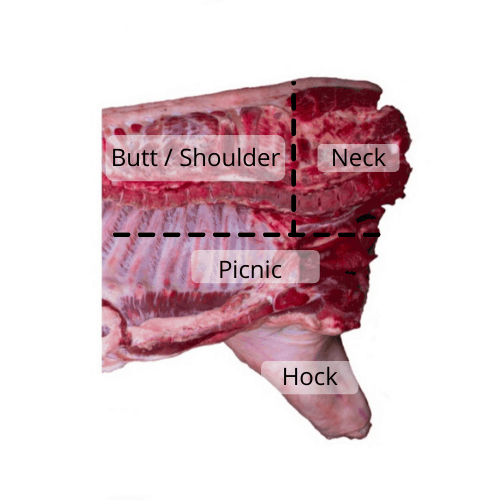
As you can imagine, this part of the animal carries the weight of the head, and is constantly working as the animal lowers and raises its head to eat. With all that workout comes tougher sinews and muscle fibres, and so longer slower cooking is required to break down those muscles into tender eating.
However this part of the animal also carries the most flavor, and so the extra care needed to cook it, is well rewarded with sweet and succulent results.
Due to the tougher nature and the added fat content, the pork shoulder is often used to produce ground pork and sausages.
Pork Butt
The pork butt is the prime part of the shoulder between the neck and the loin of the animal. This area carries the blade bone.
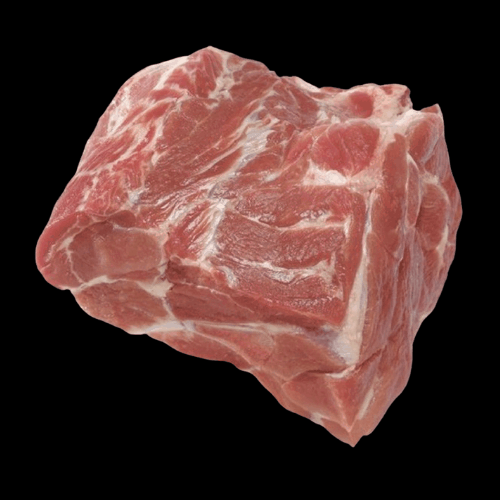
The boneless pork butt is a popular cut of meat used by BBQ and Meat Smoking enthusiast as the natural fat content allows the meat to be cooked for a long time without drying out. This cut of meat is also the most popular cut for making “Pulled Pork” as it can be pulled apart into strands after long slow cooking.
Pork butts naturally carry about 30% fat and so are the perfect cut to grind up and make sausages, burgers or ground pork recipes.
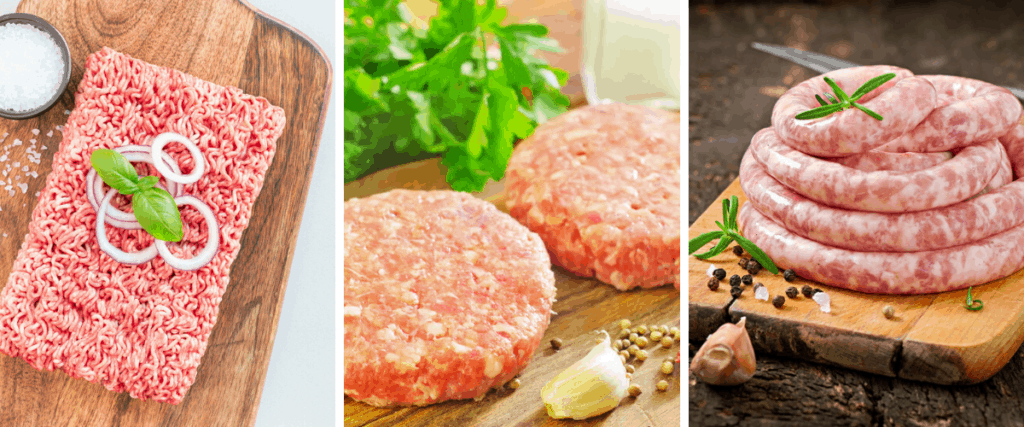
The pork butt can also be cut into bone in shoulder pork chops aka Spare Rib Chops or boneless pork shoulder steaks, for slow cooking recipes.
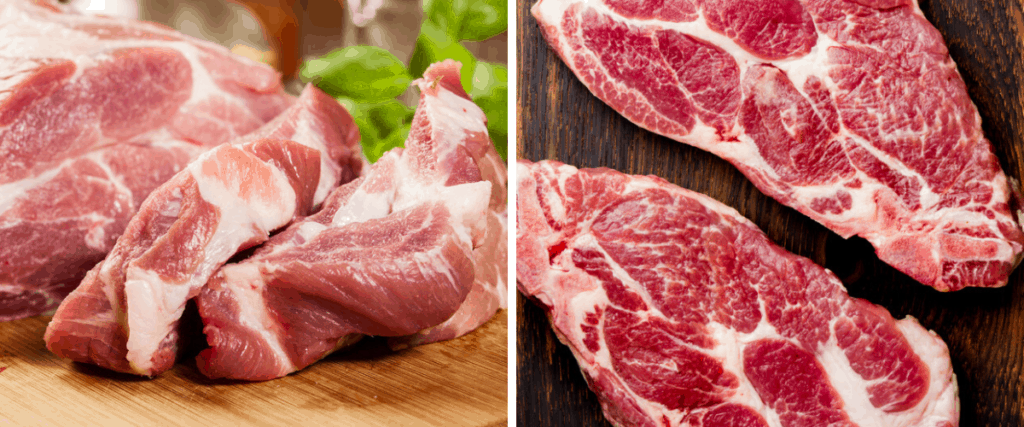
Pork Picnic Roast
The pork picnic is the lower part of the shoulder and usually includes the arm or hock of the animal. Due to the irregular and thinner shape of the picnic, this part of the animal is usually boned or part boned and tied to be sold as a slow roasting joint. The skin or “crackling” is also usually left on these cuts.
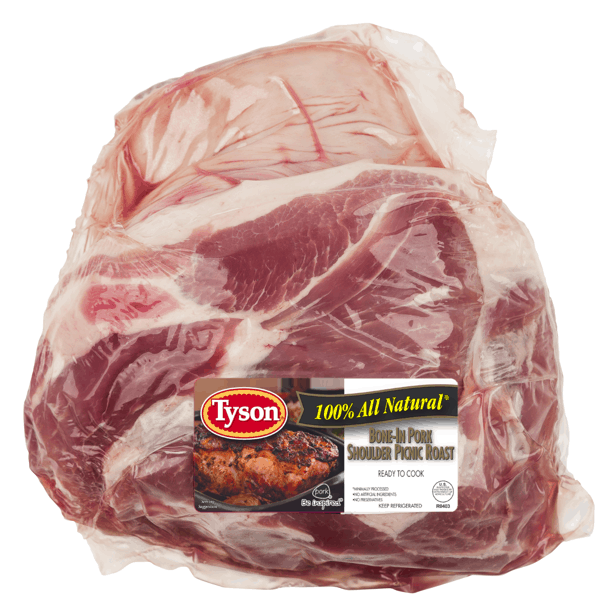
Sometimes the cut can be called a “picnic ham” which can be confusing because the “ham” of pork comes from the hind quarter or rear leg. If you see this cut in the meat aisle then just be aware that it is from the shoulder and will be tougher and require longer cooking than the leg roasts.
Pork Neck
The pork neck is really tough due to supporting the full weight of the head and so this part of the animal is usually boned out and used for sausages, ground pork etc.
Sometimes you can find pork neck bones for sale as they are popular for asian and oriental recipes and as the base for broths.
Pork Shoulder Ribs
When the pork shoulder is boned to create the boneless pork butt, a small rack of ribs can be removed from the shoulder.
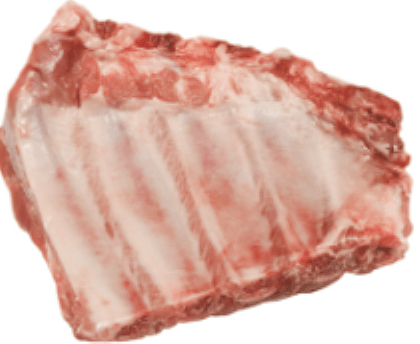
This mini rack will vary in how much meat is left on them depending on the style of butchery be used. Somethimes a generous meat covering will be left on the ribs and these can be slow cooked and eaten much like the spare ribs and baby back ribs, otherwise they are cut close to the bone and are generally used as the neck bones to make broths or some specific recipes.
Pork Cuts From The Loin of a Pig
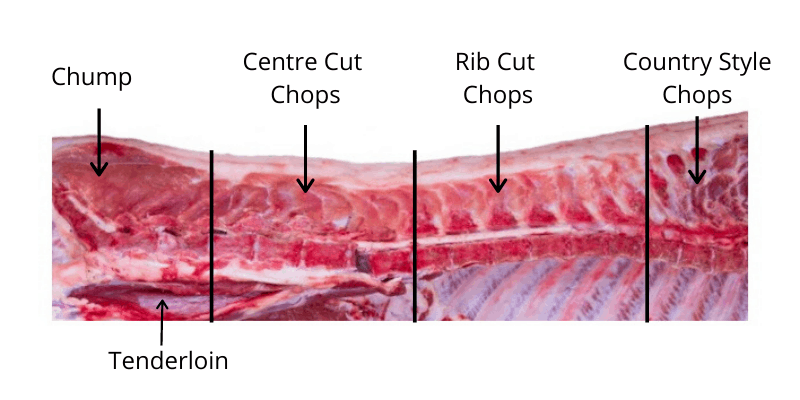
A whole pork loin forms the back of the pig leading from the shoulder down to the leg and includes the pork fillet / tenderloin.
The pork loin offers tender cuts of meat that can be cut both with the bone (chops), or boneless (steaks).
If you think about beef steaks, then the pork loin offers the following cuts:
- Top Sirloin – ( Boneless Chump)
- T – Bone – ( Centre Cut Bone In Chop Tapered Tenderloin)
- Porterhouse – ( Centre Cut Bone In Chop with Tenderloin )
- New York – ( Boneless Centre Cut Steak)
- Rib Eye – ( Boneless Rib Cut Steak)
- Filet Mignon – ( Whole Pork Tenderloin)
The pork loin can be found with both the skin on and skin removed depending of preferance, as well as being sold as roasting joints.
A pork crown or pork rack is produced by french trimming the rib section of the pork loin and cooking it in one piece as a roasting join.
We will now look at how those different pork loin cuts will be presented in a retail meat aisle.
Pork Loin Chops
As mentioned above, a “chop” is the name given to an individual slice of the pork loin that is cut with the bone intact. The chops can also be sold with the skin on or removed.
Centre Cut Chops
The centre cut pork chops are cut through the loin where the tenderloin is present. Here you get the equivalent of the porterhouse and T-Bone steak of pork.
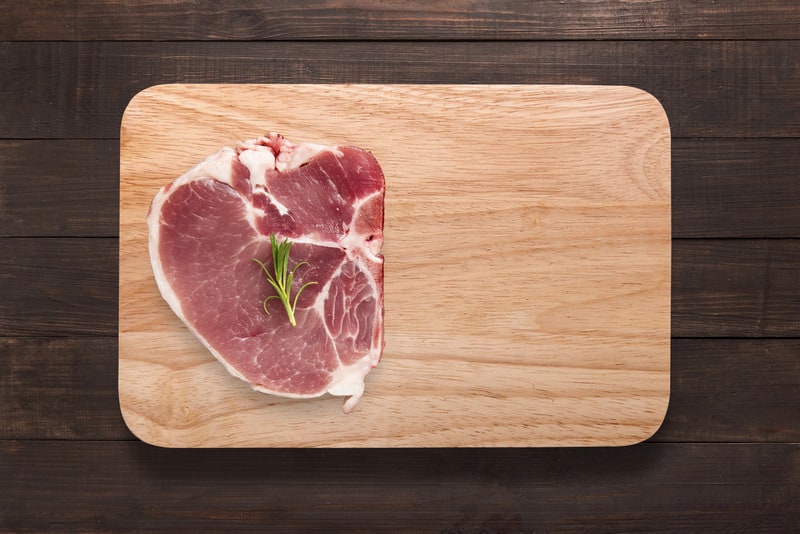
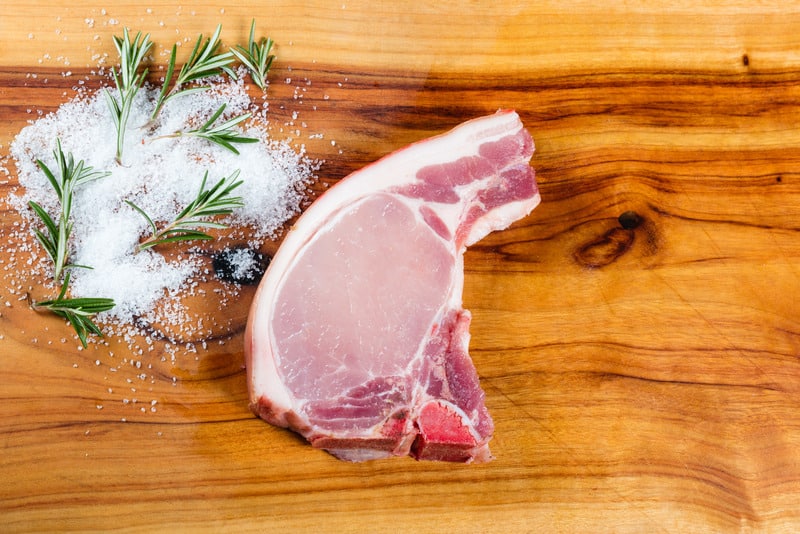
Rib Cut Pork Chops
The rib cut pork chops are cut where the baby back ribs of the pig are present. These chops can be cut thicker where they contain a full rib, or cut on a bansaw that will cut lengthwise through the rib to allow for thin cut pork chops. The rib cut chops do not contain any pork tenderloin.
Sometimes the rib pork chops will be ‘chined’ which means that the backbone has been removed and so you just have the eye of the meat attached to the rib bone.
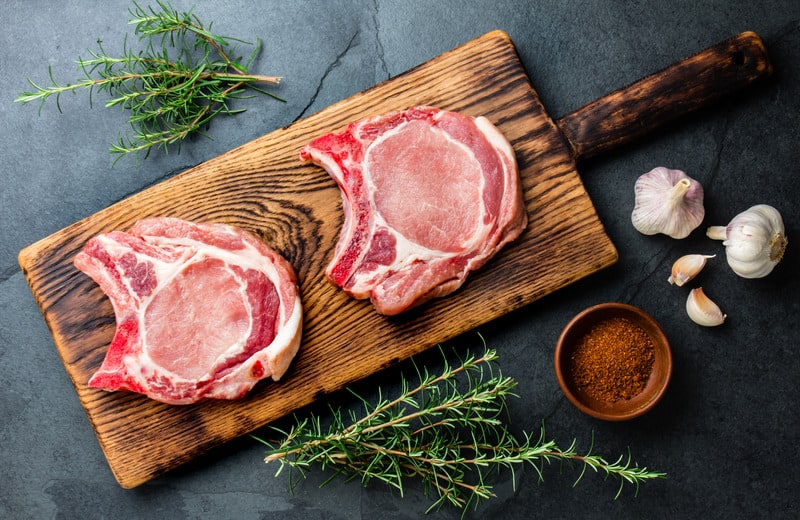
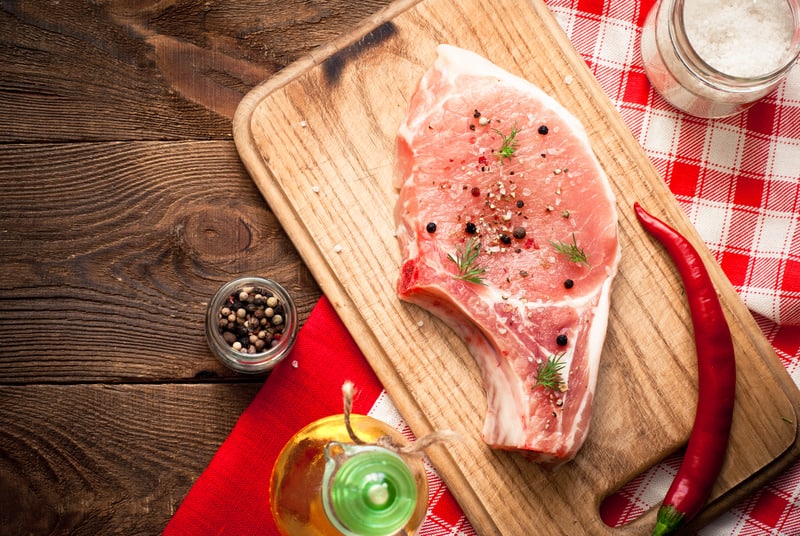
French Trimmed Pork Rib Chops / Rack of Pork
When the pork rib chops are ‘french trimmed’ they have the skin and backbone removed, and the meat and fat are trimmed to present a clean rib bone with just the eye of the meat remaining.
The french trimmed pork can then be sold as individual chops or as a roasting joint known as a rack of pork and are usually bought for special occassion dinners as they present very nicely, and can make for a visual focal point to any table.
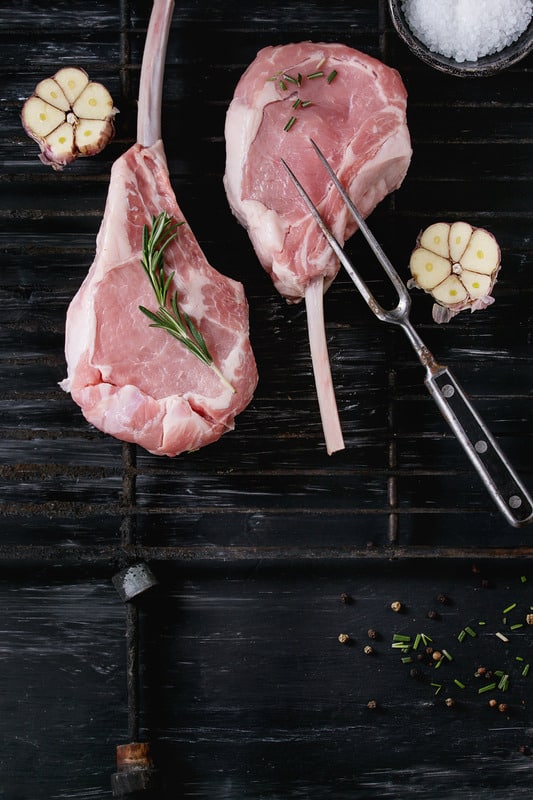
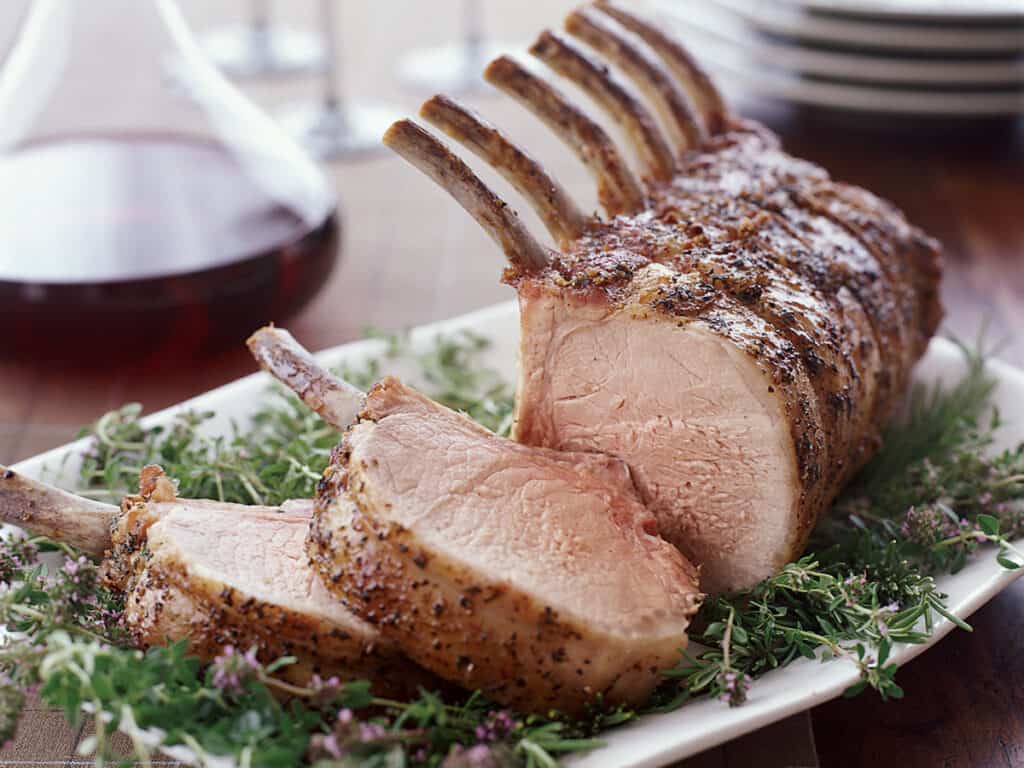
(pic credit: foodandwine.com)
Country Style Pork Chops
The country style pork chops are cut from the shoulder end of the pork loin and will usually have part of the shoulder blade bone running through it. They are usually sold skin removed and sometimes cut through the centre to make smaller chops.
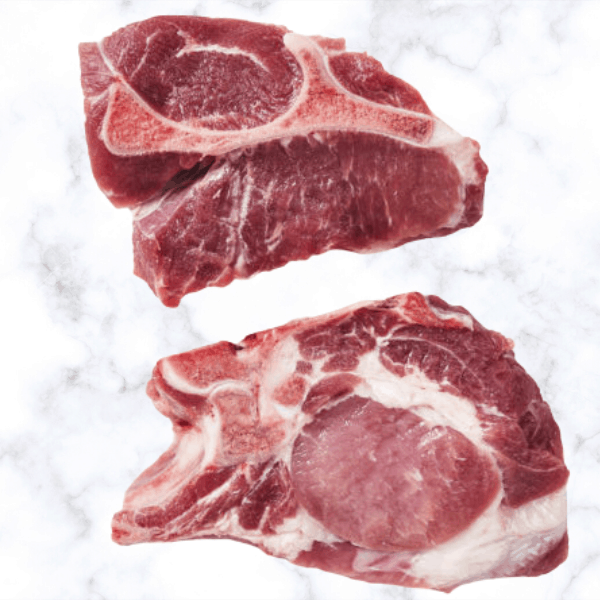
Pork Ribs
The main types of pork ribs that you can get from a side of pork are:
- Baby Back Ribs
- Pork Spare Ribs
- St Louis Style Ribs
- Belly Pork Ribs
- Pork Riblets
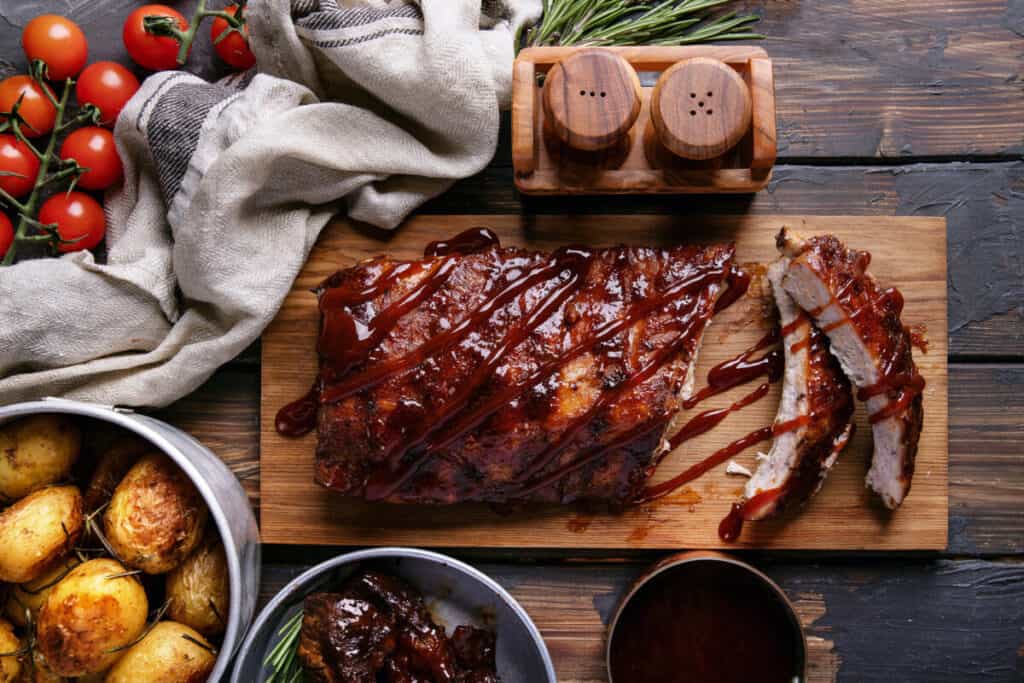
You can find a full breakdown of each of these ribs in our article: Know Your Pork Ribs: Baby Backs, Spare Ribs & Riblets Explained
Pork Steaks / Boneless Pork Chops
When the chops listed above are sold with the bones removed, they are referred to as ‘steaks’ or sometimes ‘boneless pork chops’. These are the same cuts of meat, just with the bone removed.
Pork Steaks are usually sold with the skin and excess fat removed, however boneless chops can also be sold with the skin and fat in tact and just the bone missing.
When the pork loin has been boned out, it can then be portioned into steaks or sold as boneless roating joints.
Centre Cut Pork Steaks / Roasts
This is the ‘New York Strip’ or striploin of the pork loin.
It represents just the eye of the meat that has been trimmed of the skin and excess fat and can be found in meat counters as pre-cut steaks or larger roasting portions.
You will often see full loins being sold and these can be a cheaper way of buying if you wish to portion cut it at home yourself.
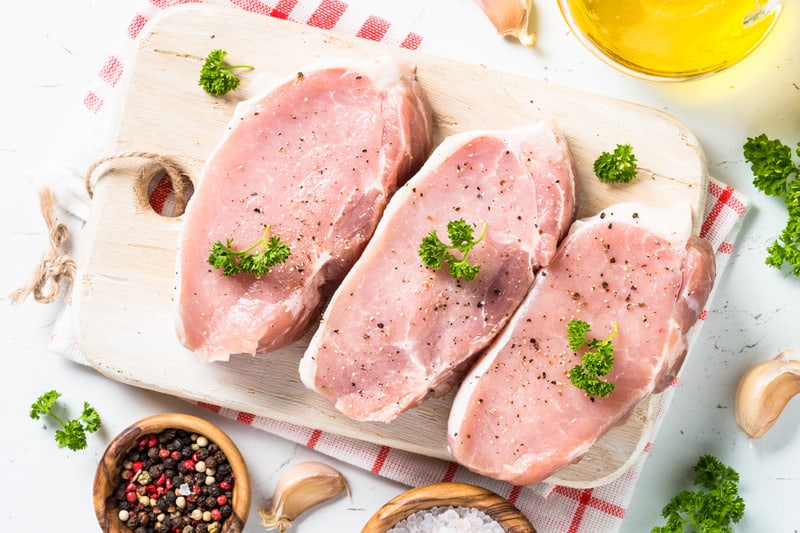
Boneless Pork Chops / Roast
This cut of meat is the same as the Centre Cut mentioned above, however it is usually sold with the skin left in tact.
The boneless pork chops/roasts can sometimes carry more fat as it is difficult to remove excess fat while the skin remains on the joint.
This cut can be more flavorful and succulent than its trimmed counterpart due to the extra fat and skin naturally protecting and basting the meat during cooking.
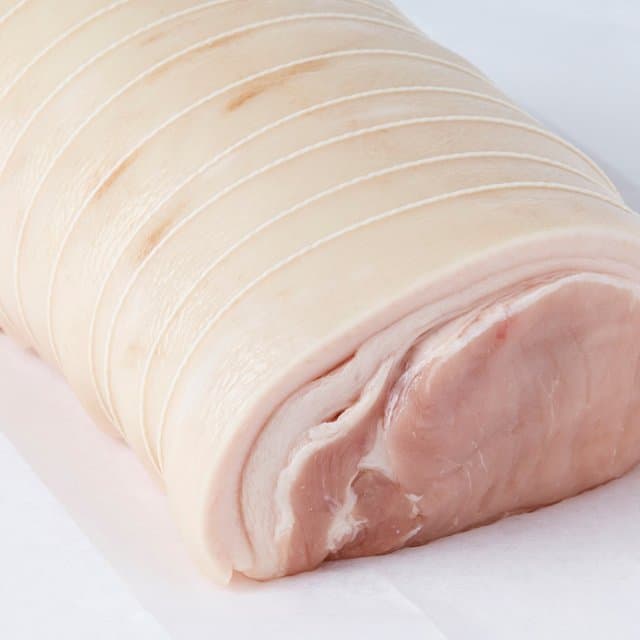
Boneless Pork Rib Eye
The rib end of the loin when boned out becomes the rib eye steak portion of the loin. These steaks tend to carry a little more marbling within the actual steak which provides great flavour during the cooking process
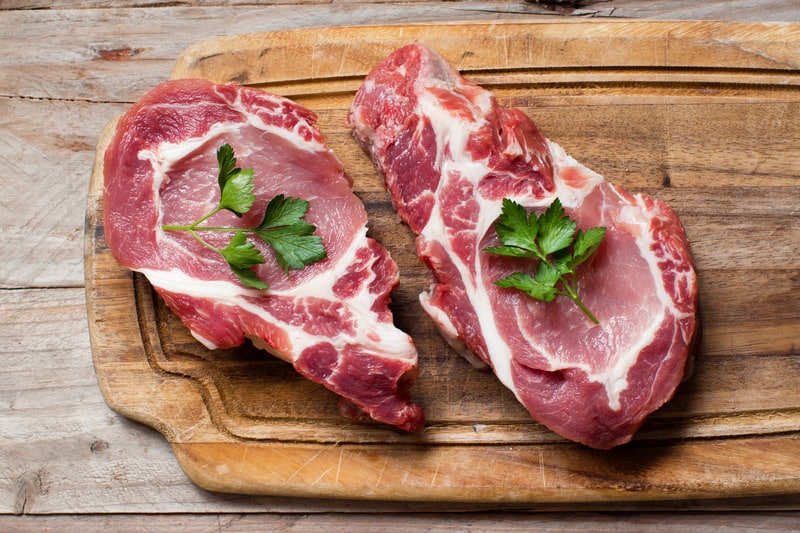
Pork Medallions
Pork medallions are when the eye of the pork loin is trimmed totally of all fat and silverskin to leave just a perfectly lean cut of meat.
Medallions of pork are popular with people who are on very low fat diets, or wish to have them pounded flat to make pork escalopes or breaded cutlets.
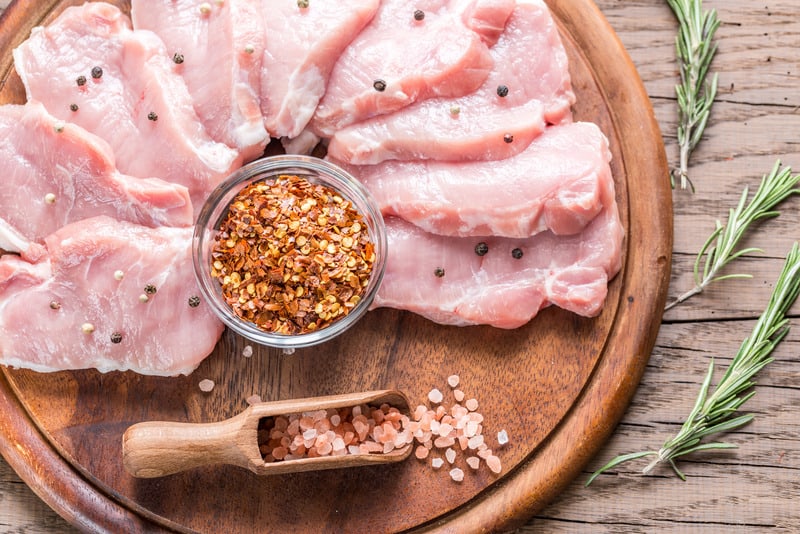
Pork Tenderloin
The pork tenderloin is a small lean and very tender cut of meat that runs under the pork loin. This is the filet mignon cut of pork.
Being a smaller cut, it is often cooked whole and then cut into slices when it is served. A full pork tenderloin will usually serve 2 – 3 people at most.
Due to the lean and tender nature of this cut, it is commonly cut into strips to make stir fry dishes, or pounded flat to make schnitzels, ecalopes, or even stuffed and rolled.
There is a thin silver skin covering the thicker end of the tenderloin that is best removed prior to cooking.
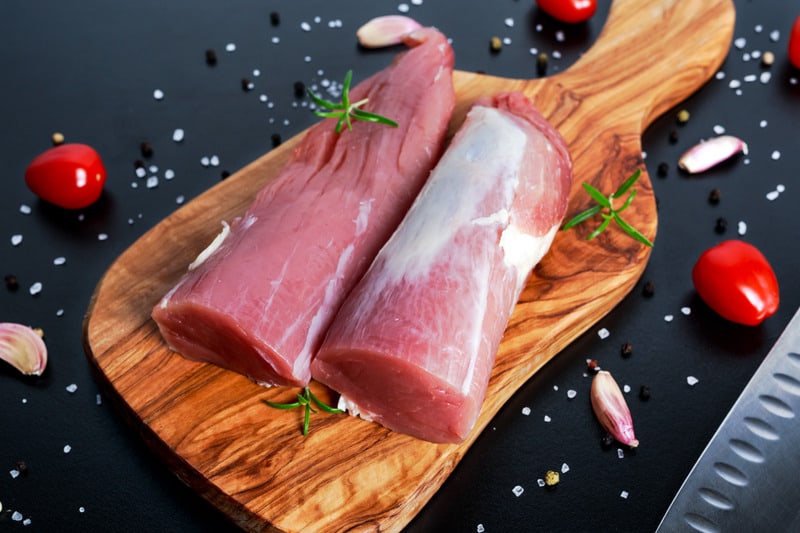
Pork Chump
The pork chump is the top sirloin or rump end of the pork loin where it attaches to the leg/ham of the pig. When left attached to the loin, it can either be boned and rolled as part of the boneless pork loin roast, or boned out and sold as steaks.
Depending on how the pig is broken down by the individual butcher, sometimes the chump can be left attached to the leg and boned and rolled into a roasting joint.
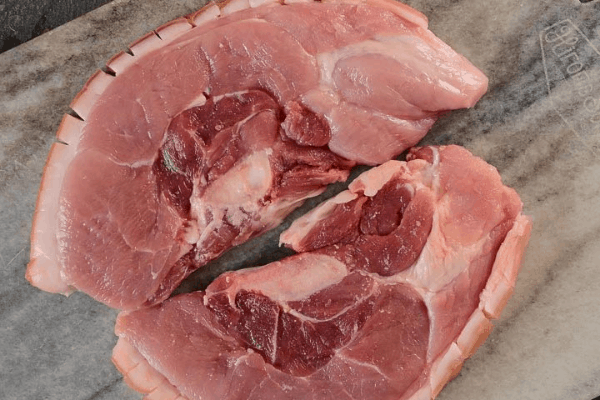
Back Bacon
In the UK especially, the boneless pork loin of the pig is also used for making bacon. Independent butchers will use a dry cure method by packing the fresh pork loin with salt and flavorings. Commercially produced bacon is usually cured with a wet brine solution.
Due to the leaner and larger slices, both smoked and unsmoked back bacon are the most popular bacon cut sold in the UK. It is this bacon that will be used to make the famous ‘Bacon Butty’ (Bacon Roll/Sandwich) or the Full English Breakfast
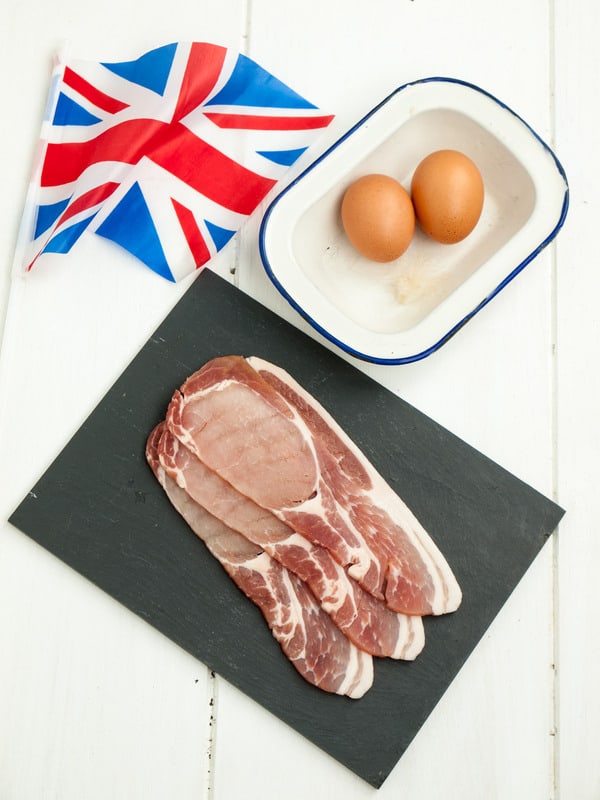
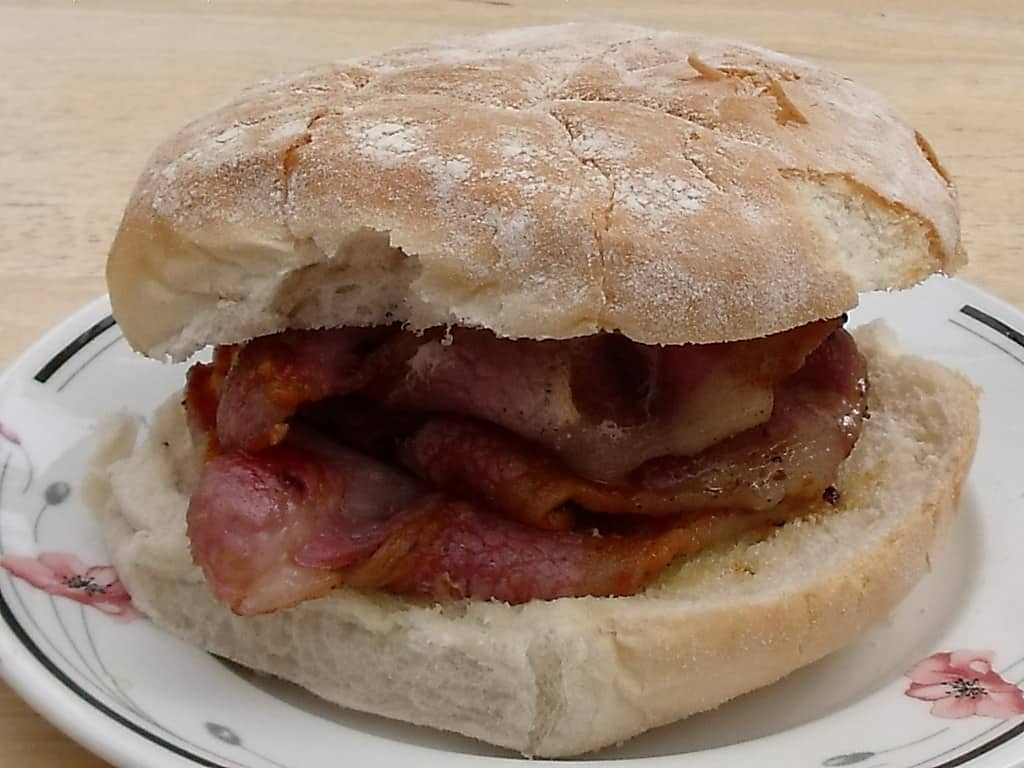
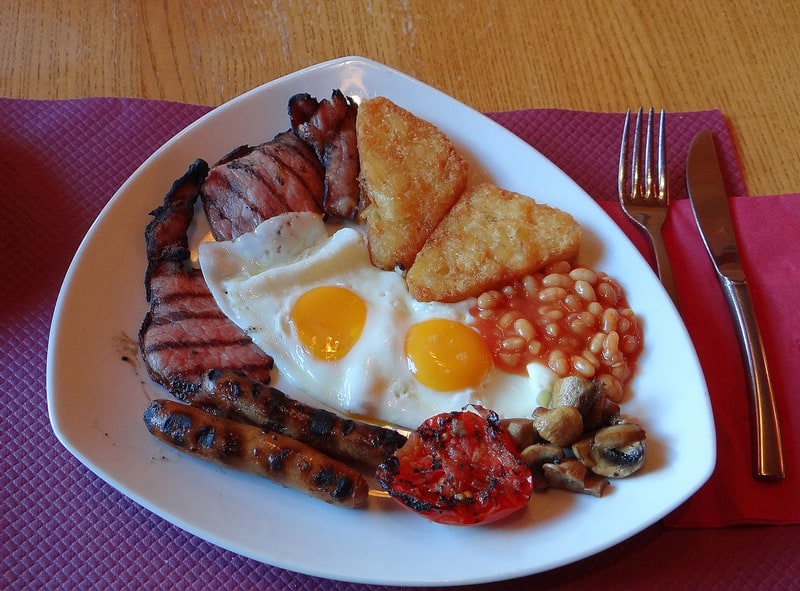
You can see an article of the differences between British and American bacon at myrecipes.com
Pork Cuts From The Belly
The belly of the pig is predominantly smoked and used for making bacon in the USA.
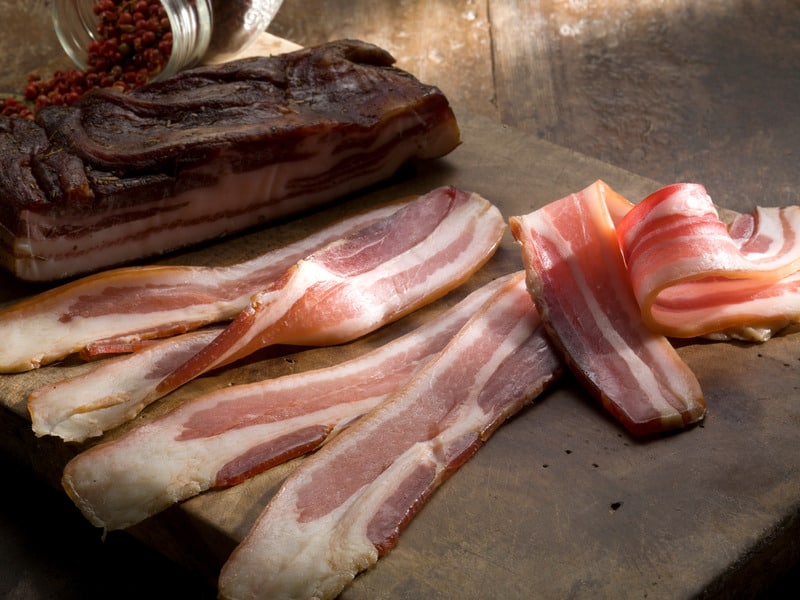
UK Style Belly Pork Slices / Roasting Joints
In the UK, the pork belly is a populat cut of meat that is sold fresh (unsmoked) with the skin on. The skin is usually ‘scored’ which involves criss cross slicing through the skin of the pork to allow it to crisp up and create ‘crackling’.
The ‘Belly Pork’ can be sold as both slices or roasting joints, and both with or without a bone. The slices are cut thicker than bacon would be cut, and are cooked fried, baked or broiled.
Due to the higher fat content, the belly pork tends to be cheaper than the leg or loin roasting joints, but the succulent sweet meat is hard to beat if you are not concerned with the extra fat content.
Sometimes the butcher will stuff and roll the belly pork with a bread stuffing mix or sausagemeat.
Here are some of the ways you would see belly pork being sold in the UK
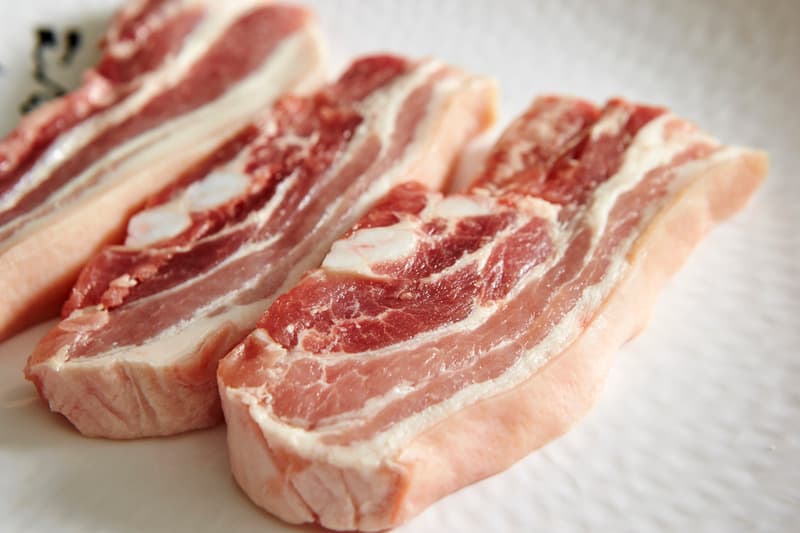
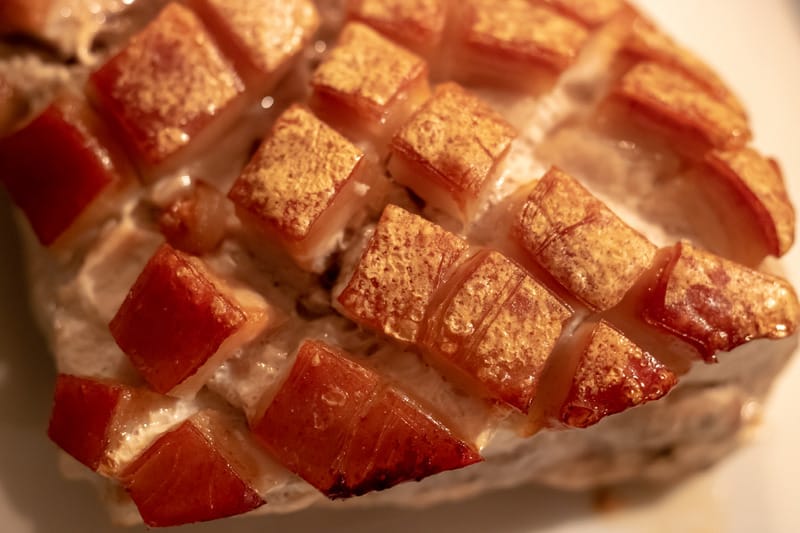
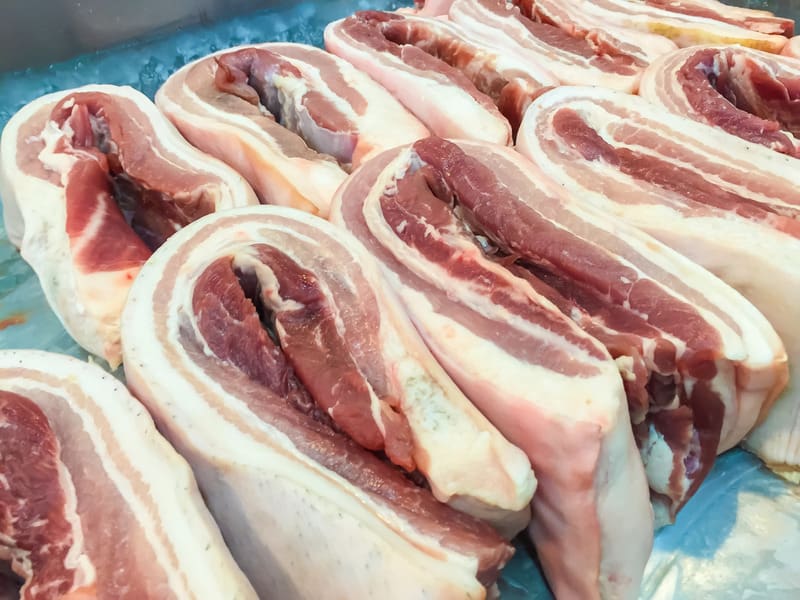
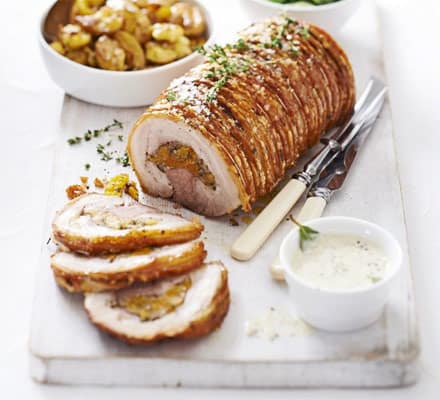
Belly Pork Ribs
When the ribs are removed in a sheet, they become the Pork Spare Ribs or St Louis Style pork ribs. You can check out all about the belly ribs in our article here: Know Your Pork Ribs
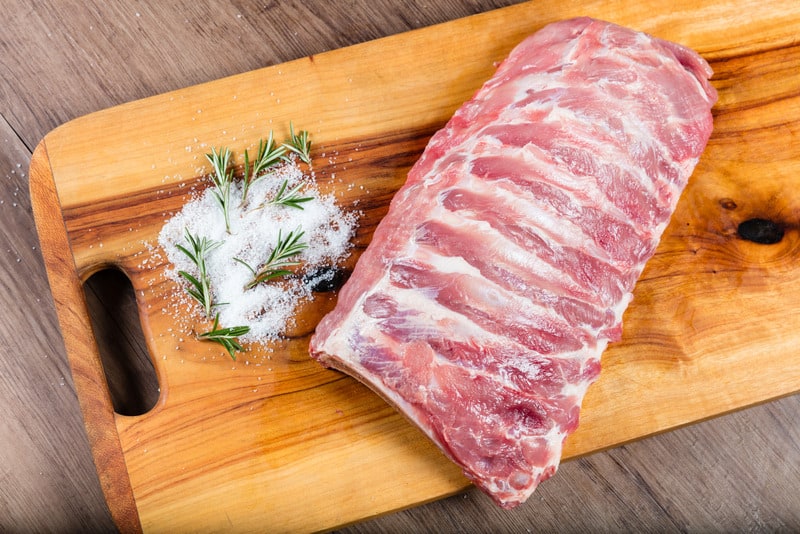
Pork Cuts From The Leg / Ham
The pork leg / ham comes from the rear or back leg of the animal. The leg can be cut short by leaving the chump (top sirloin) attached to the loin, or can be cut long by leaving the chump attached to the leg.
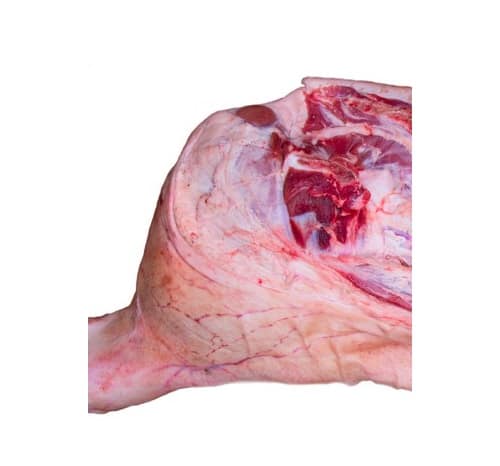
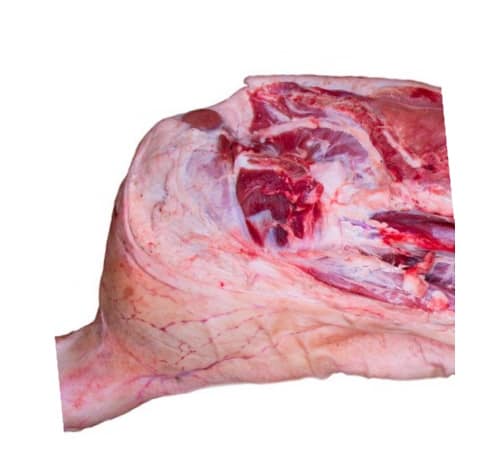
The leg of pork, also referred to as the ‘ham’ is where most of the pork roasting joints come from, although the leg can also be broken down into smaller lean sections and cut into pork steaks.
The leg is made up of a series of lean muscles that are relatively tender and can be used for most cooking recipes such as roasts, stir-fry, kebobs, diced pork etc.
This is the part of the animal that is most commonly used to produce cooked hams after the leg has been smoked/cured.
Some of the most common uses for the pork leg are:
- Roasting Joint
- Steaks
- Diced Pork
- Stir-Fry
- Kebobs
- Cooked Ham
Here are some ways that you may see the pork leg being sold in your grocery store meat counters
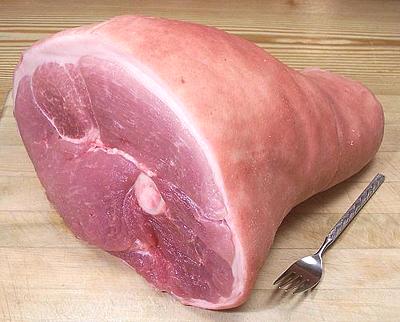
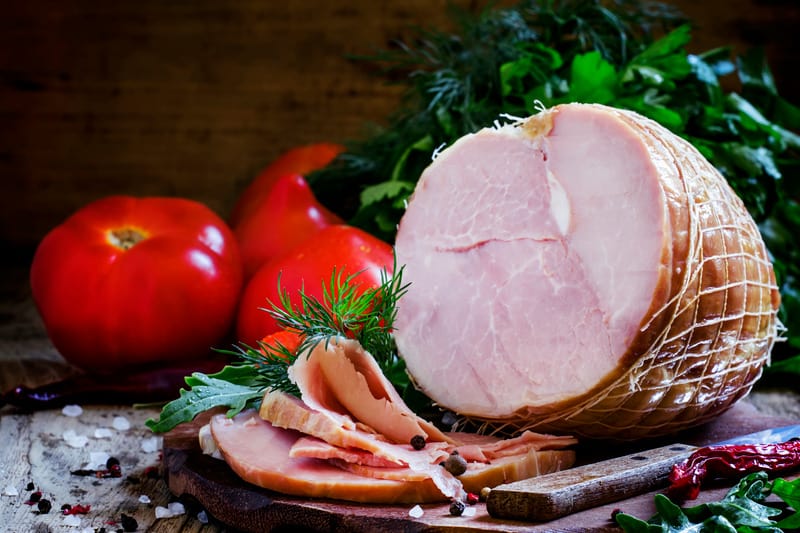
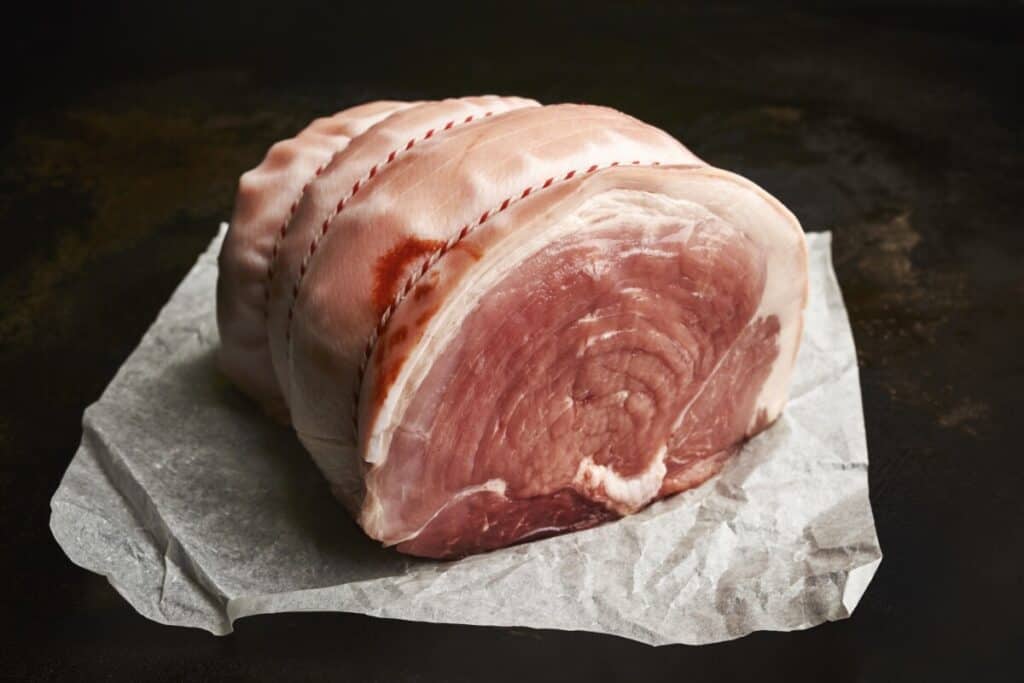
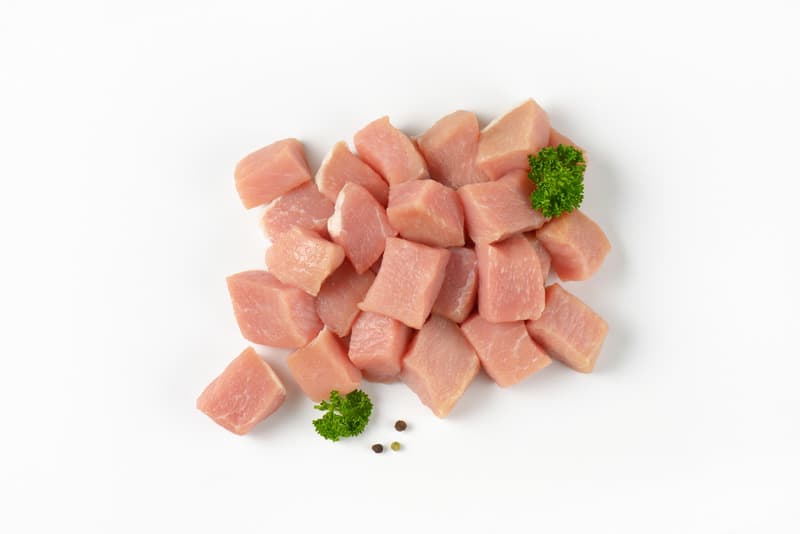
Pork Head, Hocks & Trotters
Many times the pork head, hocks and trotters are overlooked by shoppers as an undesireable cut of meat. However, these cuts can often be picked up very cheaply and often have a lot of meat that can be used.
Some of the dishes that can be produced from using these cuts are:
- Ham Hock and Bean Stew
- Pea & Ham Hock Soup
- Roasted Pigs Chep (cheek)
- Braun / Headcheese
- Chinese Pigs Trotters
- Crispy Pigs Ears
Although these may not sound appetising to some, for others they are a delicacy and provide really flavorful meals. Why not go out of your comfort zone and see if there is a recipe that appeals to you using these lesser used cuts of pork. After all, as the saying goes
” You can use everything from the pig except the squeal”
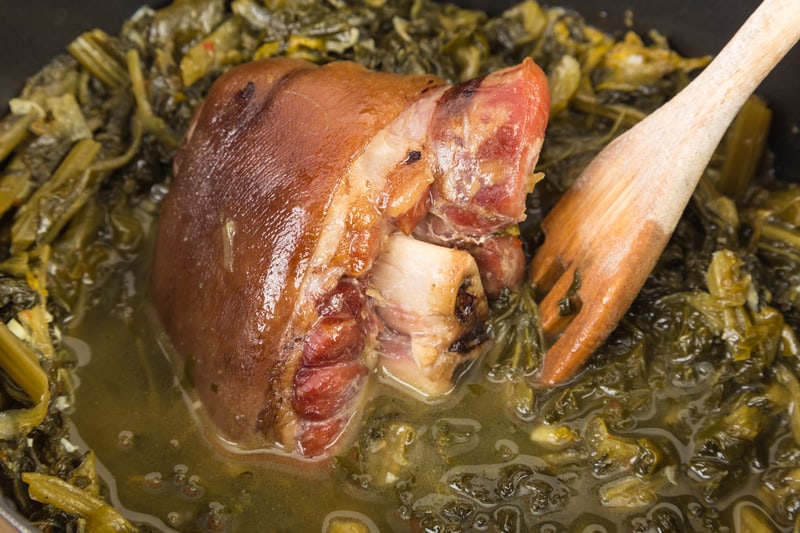
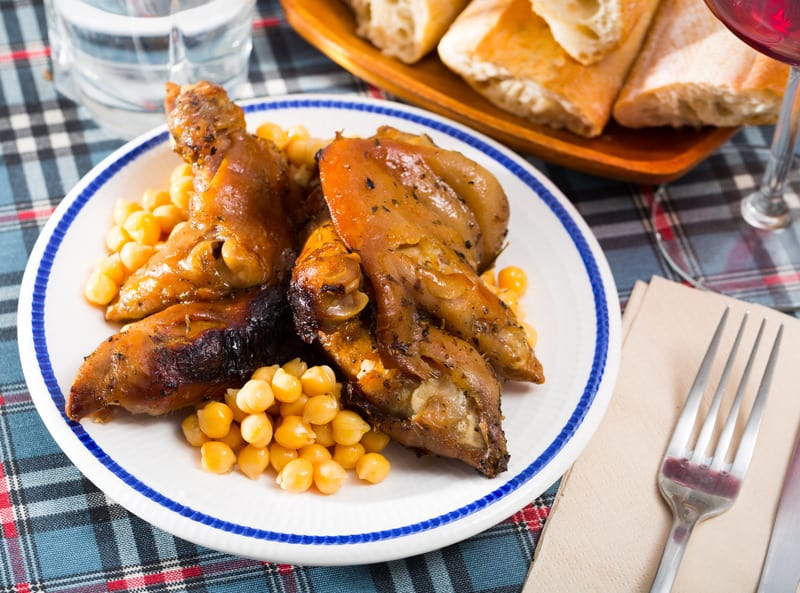
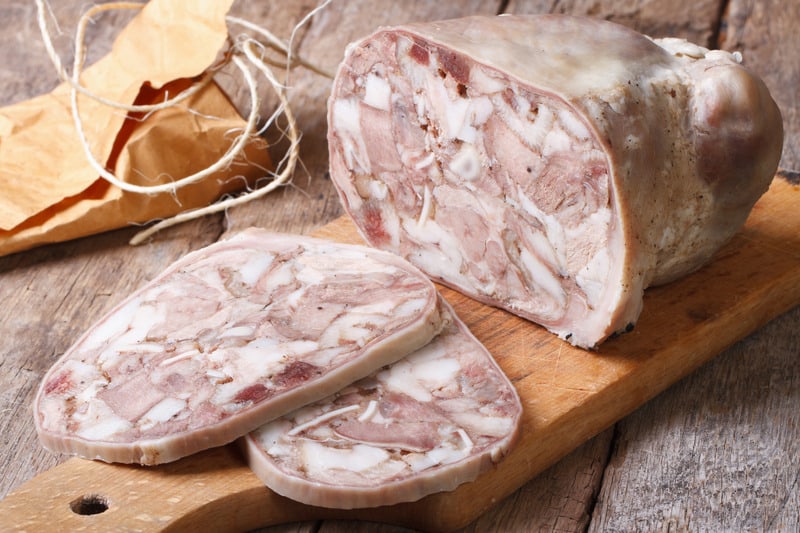
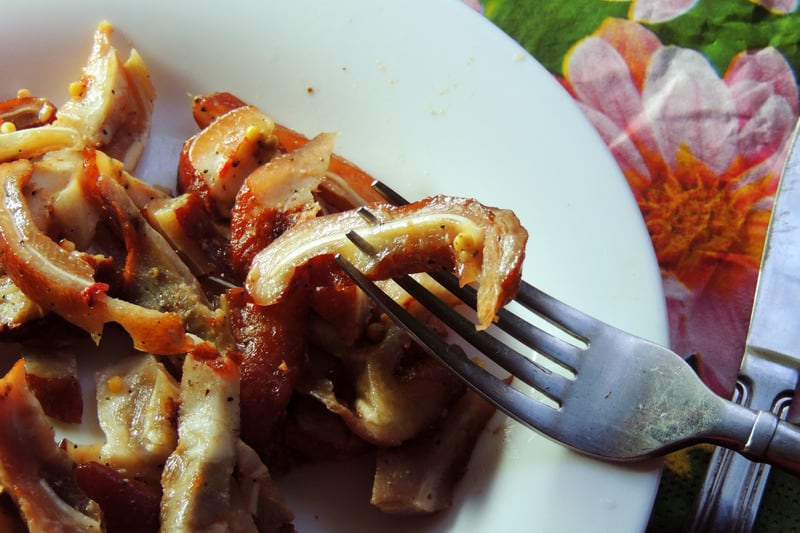
Hopefully this article has provided you with the information you require to help you make informed deecisions about your future pork buying needs.
